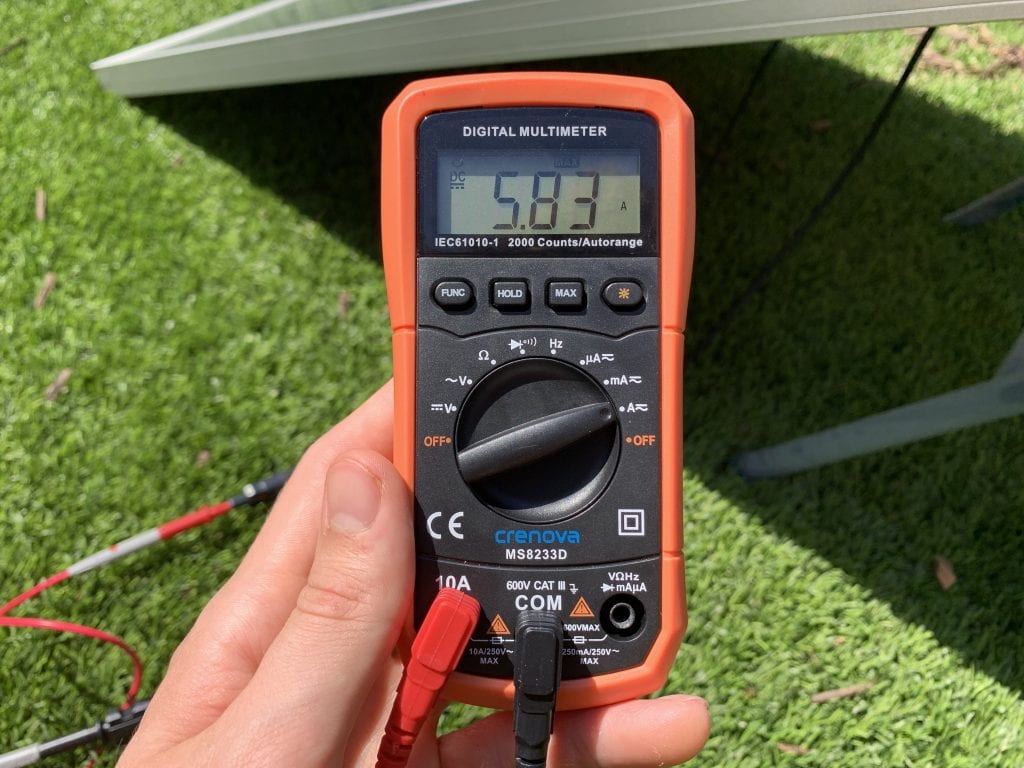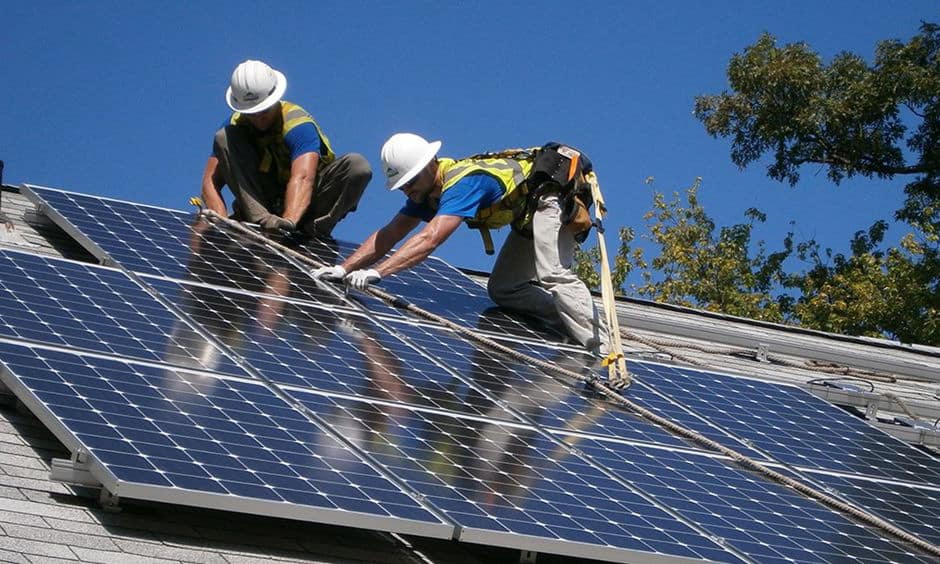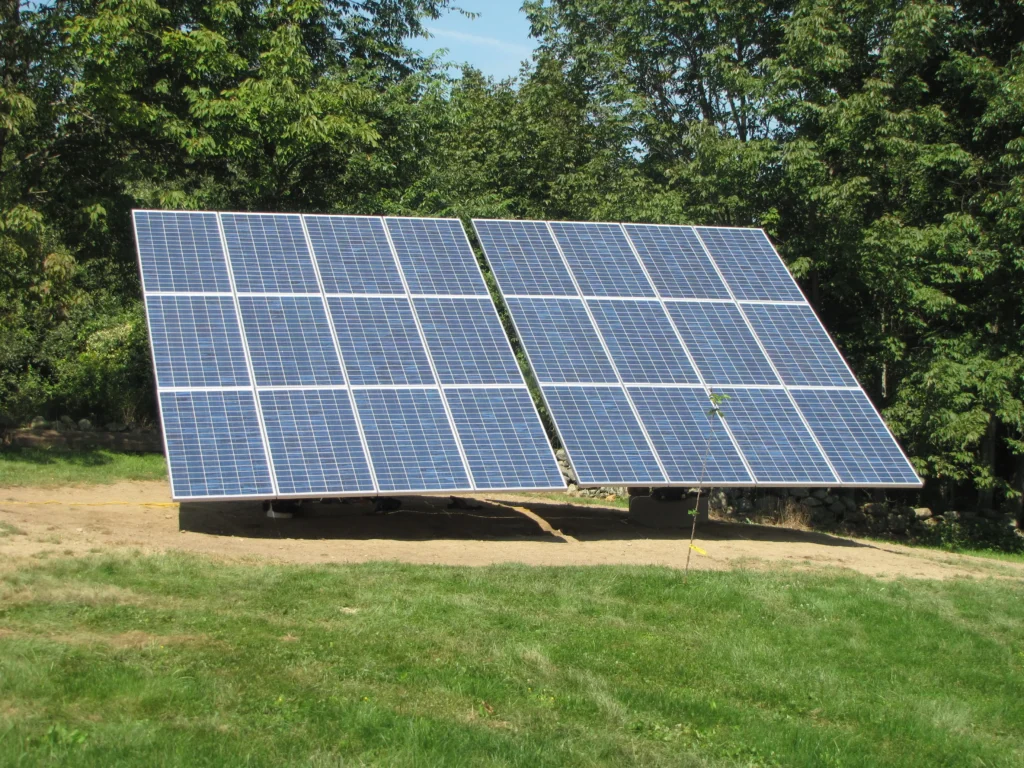Hey there! So, you’ve decided to go green and harness the power of the sun by setting up solar panels. Good for you! Solar energy is a fantastic renewable resource that can help you save money on your electricity bills while reducing your carbon footprint. But, how can you be sure that your solar panels are actually charging your batteries? Don’t worry, my friend, I’ve got your back! In this article, we’ll walk through the process of checking if a solar panel is charging a battery. So, let’s dive in and shed some light on this topic!
Understanding Solar Panels and Batteries
Before we jump into the nitty-gritty of checking the charging status, let’s quickly revisit the basics. Solar panels are those shiny devices that convert sunlight into electricity. They consist of small units called photovoltaic cells that generate an electric current when exposed to light. The electricity produced by the solar panels is then transferred to a battery, where it is stored for later use.
The Components Required for Monitoring
To monitor the charging process effectively, you’ll need a few key components. First off, you’ll obviously need a solar panel. This is the heart of your setup, responsible for converting sunlight into electricity. Secondly, you’ll need a charge controller. This device regulates the energy flow from the solar panel to the battery, preventing overcharging or damage. Finally, you’ll need a metering device that allows you to measure the voltage, current, and power output of your solar panel and battery.
Checking Solar Panel Output
Let’s start by checking the output of your solar panel. To do this, you’ll need to measure the voltage it produces. One way to do this is by using a multimeter. Simply connect the positive and negative leads of the multimeter to the corresponding terminals on the solar panel. This will give you a reading of the voltage being generated. Remember, the voltage output may vary depending on factors such as sunlight intensity and temperature.
Next up is measuring the current generated by your solar panel. Again, you can use a multimeter by setting it to measure current instead of voltage. Connect the multimeter in series with the solar panel, ensuring the current flows through it. The reading on the multimeter will indicate the current flowing from the solar panel to the battery.
Calculating the power output of your solar panel is as easy as multiplying the voltage and current readings you obtained earlier. This will give you an idea of how much power your solar panel is generating. Keep in mind that power output may fluctuate throughout the day due to varying sunlight conditions.
Understanding Charge Controllers
Now that we have an idea of how to check the solar panel output, let’s talk about the charge controller. This nifty device helps regulate the energy flow, ensuring that your battery doesn’t get overcharged or damaged. There are two main types of charge controllers: PWM (Pulse Width Modulation) and MPPT (Maximum Power Point Tracking).
PWM charge controllers are the more affordable option and are suitable for smaller solar panel setups. They work by cyclically turning the solar panel output on and off to regulate the energy flow. On the other hand, MPPT charge controllers are more advanced and efficient, making them ideal for larger setups. They actively track the maximum power point of the solar panel and adjust the voltage and current accordingly for optimal charging.
Monitoring Battery State of Charge (SOC)
To check if your solar panel is effectively charging your battery, you’ll need to monitor its state of charge (SOC). The SOC indicates how much energy is stored in the battery as a percentage of its total capacity. Measuring the voltage of the battery is one way to get an estimate of its SOC. Use a multimeter to measure the voltage across the battery terminals. Different battery technologies have different voltage ranges, so make sure to refer to the manufacturer’s specifications for accurate readings.
If you want more accurate and real-time data, you can invest in a battery monitor. These monitors are designed specifically for monitoring battery voltage, current, and SOC. They provide you with instant feedback on the battery’s condition, allowing you to track its charging progress effectively.
Other Monitoring Options
If you’re tech-savvy and want to take your solar panel monitoring to the next level, there are some advanced options available. Remote system monitoring allows you to monitor your solar panel system’s performance from anywhere in the world using your smartphone or computer. With this option, you can keep track of real-time data, receive notifications about any issues, and even control your system remotely.
Another option is integrating your solar panel system with the Internet of Things (IoT). This enables your solar panels and batteries to send data to a central hub that can be accessed via your smartphone or computer. You can analyze this data and gain valuable insights into your system’s performance, making it easier to detect any inefficiencies or faults.
Troubleshooting Charging Issues
Sometimes, solar panel charging issues can arise. But fret not, my friend! Troubleshooting these issues is easier than you might think. Start by checking all the connections and ensure they are secure. Loose or faulty connections can disrupt the charging process.
Next, examine the settings on your charge controller. Ensure that it is properly configured and set up for your specific battery type and charging needs. Incorrect charge controller settings can affect the charging efficiency and battery performance.
Lastly, evaluate the health of your battery. Over time, batteries can degrade, leading to reduced charging capacity. If you suspect your battery is not holding a charge effectively, it may be time to replace it.
Understanding and Interpreting Charging Patterns
Monitoring the charging patterns of your solar panel system is a valuable insight into its performance. By analyzing these patterns, you can determine how efficiently your system is charging and identify any irregularities. Daily charging patterns can provide insight into energy generation variations throughout the day and help you correlate them with sunlight availability.
Monitoring long-term charging patterns allows you to detect seasonal variations and any potential performance degradation. By keeping track of these patterns, you can better understand how external factors affect your system’s overall performance.
Advanced Techniques and Tools for Monitoring
If you’re really into monitoring and optimizing your solar panel system, there are some advanced techniques and tools you can explore. Heat maps and temperature monitoring can give you a better understanding of the temperature distribution across your solar panels. High temperatures can affect the performance and efficiency of your panels, so it’s crucial to keep an eye on these factors.
Additionally, power optimizers can be used to maximize the energy production of each individual solar panel by mitigating shading, soiling, or other issues. These optimizers enhance the overall efficiency of your system, resulting in increased power output.
Alright, my friend, we’ve covered a lot of ground here! We’ve explored the basics of solar panels and batteries, discussed how to check solar panel output, examined charge controllers, monitored battery state of charge, and even dabbled in some advanced monitoring techniques. Remember, regularly monitoring your solar panel charging process is essential for maximizing efficiency and ensuring smooth operation. So go ahead, put your newfound knowledge to use, and enjoy the benefits of a well-charged battery powered by the sun!
Now that we’ve covered the basics of monitoring solar panels and batteries, let’s explore some advanced techniques and tools that can take your monitoring game to the next level.
Heat maps and temperature monitoring are excellent tools for gaining insights into the temperature distribution across your solar panels. Excessive heat can potentially decrease the efficiency of solar panels and affect their overall performance. By using heat maps, you can identify hotspots, where panels may be experiencing elevated temperatures. Addressing these hotspots, such as adjusting panel positioning or improving ventilation, can help maximize energy production and ensure efficient operation.
In addition to heat maps, temperature monitoring systems allow you to track the temperature levels of your solar panels in real-time. By closely monitoring the temperature, you can identify any abnormalities or deviations from the ideal operating range. This information can be vital in detecting potential issues and taking preventive measures to maintain optimal panel performance.
Another advanced technique to consider is the use of power optimizers. Power optimizers are devices that are connected to individual solar panels in your array. These devices enable panel-level optimization, ensuring that each panel operates optimally, even if some panels are partially shaded or experiencing other issues. By utilizing power optimizers, you can maximize the energy production of your entire solar panel system, ultimately boosting its overall efficiency.
Smart grid integration is another area where advanced monitoring comes into play. With smart grid integration, your solar panel system can communicate with the grid, allowing for better synchronization and grid stability. This integration enables you to monitor and manage your system’s performance in real-time, responding to any grid changes or requirements efficiently. Smart grid integration opens up possibilities for dynamic energy management and potential financial incentives, making it a valuable investment for further optimizing your solar panel system.
Wow, we’ve explored a wide range of techniques and tools for monitoring solar panel charging! From measuring solar panel output and monitoring battery state of charge to advanced techniques such as heat maps, power optimizers, and smart grid integration, we’ve covered it all. By implementing these monitoring strategies, you can ensure the optimal performance of your solar panel system, maximize energy production, and make the most out of your renewable energy investment.
Remember, regular monitoring and maintenance are vital to keep your solar panel system operating efficiently. By checking the output of your solar panels, monitoring your battery’s state of charge, and troubleshooting any charging issues, you can address potential problems and optimize your system’s performance. Advanced techniques and tools, such as temperature monitoring, power optimizers, and smart grid integration, allow you to take monitoring to the next level, giving you valuable insights and control over your solar energy production.
So, my friend, go forth and harness the power of the sun with confidence! Enjoy the benefits of lower energy bills, reduced carbon footprint, and the satisfaction of knowing that you’re contributing to a greener and more sustainable future.
Battery Monitoring and Maintenance
Monitoring your battery’s state of charge is an essential aspect of ensuring the longevity and performance of your solar panel system. By regularly checking the battery’s voltage and state of charge, you can prevent overcharging, which can lead to battery degradation, or undercharging, which can decrease the battery’s capacity and lifespan.
In addition to monitoring the battery’s state of charge, it’s important to perform regular maintenance. This includes cleaning the battery terminals to remove any dust, corrosion, or debris that can hinder the flow of electricity. It’s also a good idea to visually inspect the battery for any signs of damage or leaks. If you notice any issues, it’s best to consult the manufacturer or a professional to address them promptly.
Remote System Monitoring
If you want to take monitoring to the next level and have real-time access to your solar panel system’s performance, remote system monitoring is the way to go. With remote monitoring, you can connect your system to a monitoring platform or app that provides you with detailed insights and data about your solar panel’s output, battery charge level, and more.
Remote system monitoring allows you to monitor your system’s performance from anywhere in the world using your computer or smartphone. You can view real-time data, receive notifications about any issues or alarms, and analyze historical data to track performance over time. This level of control and visibility ensures that you stay informed about your system’s health and can take immediate action if any anomalies occur.
Data Logging and Tracking Software
Data logging and tracking software is another powerful tool for monitoring your solar panel system’s performance. This software collects and logs data related to your system’s energy production, battery charge level, and other relevant parameters. It provides you with a comprehensive overview of your system’s performance, allowing you to identify trends, detect anomalies, and optimize energy production.
Data logging software typically offers various visualizations and graphs to help you understand your system’s performance at a glance. You can track daily, weekly, monthly, or even yearly production and consumption trends, making it easy to monitor the effectiveness of your solar panel system. Additionally, some software solutions allow you to export the data for further analysis or to share with professionals if needed.
Advanced Battery Monitoring Systems
In addition to tracking the state of charge, advanced battery monitoring systems provide more detailed information about your battery’s health and performance. These systems use sophisticated algorithms and sensors to monitor parameters such as temperature, internal resistance, and overall battery health.
By tracking these additional parameters, advanced battery monitoring systems can provide insights into the battery’s overall health and help identify any potential issues before they become critical. This allows you to take proactive measures, such as adjusting charging parameters or replacing the battery, to maintain optimal system performance and ensure the longevity of your battery.
Can the Same Method Be Used to Check If a Solar Panel Is Charging a LiFePO4 Battery?
Yes, the same method can be used for charging LiFePO4 batteries with solar panels. It involves using a solar charge controller to regulate the voltage and current from the solar panels to ensure safe and efficient charging of the batteries. This method is suitable for off-grid solar power systems.
Solar Panel Maintenance
While monitoring the charging process is important, it’s equally important to ensure that your solar panels receive regular maintenance. By keeping your panels clean and free from debris, you can maximize their energy production and efficiency.
Periodically cleaning your panels, especially in dusty or pollutant-prone areas, helps remove any accumulated dirt, leaves, or bird droppings that may obstruct sunlight. Cleaning them with a soft cloth or a gentle stream of water can significantly improve energy output. However, it’s crucial to follow the manufacturer’s recommendations and safety guidelines when cleaning your solar panels to avoid damaging them.
Along with cleaning, inspecting your solar panels for any signs of damage such as cracks, loose wiring, or deteriorating connectors is also important. If you notice any issues, it’s best to contact a solar panel professional to assess and address the problem promptly.
Understanding Solar Panel Efficiency
Monitoring your solar panel system also involves understanding its efficiency. Solar panel efficiency refers to the amount of sunlight that is converted into electricity. Higher efficiency means more effective energy conversion, resulting in greater electricity production.
It’s important to note that solar panels have a specified efficiency rating provided by the manufacturer. This rating indicates how much sunlight the panels can convert into electricity under ideal laboratory conditions. However, real-world conditions, such as variations in sunlight, temperature, and shading, can impact actual efficiency.
Monitoring the energy production trends of your solar panels over time can give you insights into their efficiency. By comparing the expected output based on the panels’ rating to the actual energy production, you can assess how efficiently they are performing and whether there are any losses due to shading, dirt, or other factors.
Utilizing Battery Health Indicators
Many modern batteries come equipped with built-in indicators or management systems that provide valuable insights into battery health. These indicators can include LED lights, LCD screens, or even smartphone apps that display various battery parameters.
By monitoring these indicators, you can get an overview of your battery’s health and performance. They can provide information on factors such as the current charge level, temperature, and even the number of charging cycles the battery has undergone. When these indicators show any abnormalities, such as unexpected temperature fluctuations or decreased charge levels, it’s essential to investigate further or consult a professional to diagnose and address the issue.
Congratulations, my friend! You’ve made it through the extensive world of monitoring solar panel charging. We’ve covered everything from basic methods like measuring solar panel output to advanced techniques such as remote system monitoring and data logging software. Along the way, we learned about monitoring battery state of charge, troubleshooting charging issues, and even delved into solar panel and battery maintenance.
Remember, by regularly monitoring your solar panel system, you can ensure its efficiency, maximize energy production, and detect any potential issues early on. With a well-monitored and well-maintained system, you can harness the power of the sun to its fullest potential, saving money on your electricity bills while contributing to a greener and more sustainable future.


